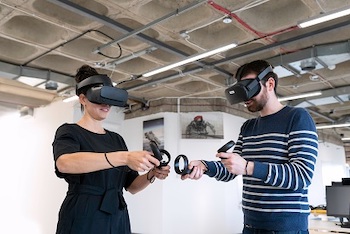Using Augmented and Virtual Reality in Information Literacy Instruction to Reduce Library Anxiety in Nontraditional and International Students
DOI:
https://doi.org/10.6017/ital.v39i1.11723Abstract
Throughout its early years, the Oral Roberts University (ORU) Library held a place of pre-eminence on campus. ORU’s founder envisioned the Library as central to all academic function and scholarship. Under the direction of the founding dean of learning resources, the Library was an early pioneer in innovative technologies and methods. However, over time, as the case with many academic libraries, the Library’s reputation as an institution crucial to the academic work on campus had diminished.
A team of librarians is now engaged in programs aimed at repositioning the Library as the university’s hub of learning. Toward that goal, the Library has long taught information literacy (IL) to students and faculty through several traditional methods, including one-shot workshops and sessions tied to specific courses of study. Now, in conjunction with disseminating augmented, virtual, and mixed reality (AVMR) learning technologies, the Library is redesigning instruction to align with various realities of higher education today, including uses of AVMR in instruction and research and following best practices from research into serving
- online learners;
- international learners not accustomed to Western higher-education practices; and
- learners returning to university study after being away from higher education for some time or having changed disciplines of study.
The Library is innovating online tutorials targeted for nontraditional and international graduate students with various combinations of AVMR, with the goal to diminish library anxiety. Numerous library and information science studies have shown a correlation between library anxiety and reduced library use, and library use has been linked to student learning, academic success, and retention.[1]
This paper focuses on IL instruction methods under development by the Library. Current indicators are encouraging as the Library embarks on the redesign of IL instruction and early development of inclusion of AVMR in IL instruction for nontraditional and international students.
References
Alison J. Head and Michael B. Eisenberg, Truth Be Told: How College Students Evaluate and Use Information in the Digital Age: Project Information Literacy Progress Report (University of Washington's Information School, 2010): 3.
Anthony J. Onwuegbuzie and Qun G. Jiao, “Information Search Performance and Research Achievement: An Empirical Test of the Anxiety-Expectation Mediation Model of Library Anxiety,” Journal of the American Society for Information Science & Technology 55, no. 1 (2004): 41–54, https://doi.org/10.1002/asi.10342
Constance A. Mellon, “Library Anxiety: A Grounded Theory and Its Development,” College & Research Libraries 47, no. 2 (1986), https://doi.org/10.5860/crl_47_02_160
Constance A. Mellon, “Library Anxiety: A Grounded Theory and Its Development,” College & Research Libraries 76, no. 3 (2015), https://doi.org/10.5860/crl.76.3.276.
Diane Mizrachi, “Library Anxiety,” Encyclopedia of Library and Information Sciences (Boca Raton, FL: CRC Press, 2017): 2782.
Qun G. Jiao and Anthony J. Onwuegbuzie, “Is Library Anxiety Important?,” Library Review 48, no. 6 (1999), https://doi.org/10.1108/00242539910283732
Qun G. Jiao and Anthony J. Onwuegbuzie, Library Anxiety: The Role of Study Habits (paper presented at the Annual Meeting of the Mid-South Educational Research Association (MSERA), Bowling Green, Kentucky, November 15–17, 2000), http://files.eric.ed.gov/fulltext/ED448781.pdf.

Downloads
Published
How to Cite
Issue
Section
License
Copyright (c) 2020 Angela Sample

This work is licensed under a Creative Commons Attribution-NonCommercial 4.0 International License.
Authors that submit to Information Technology and Libraries agree to the Copyright Notice.

